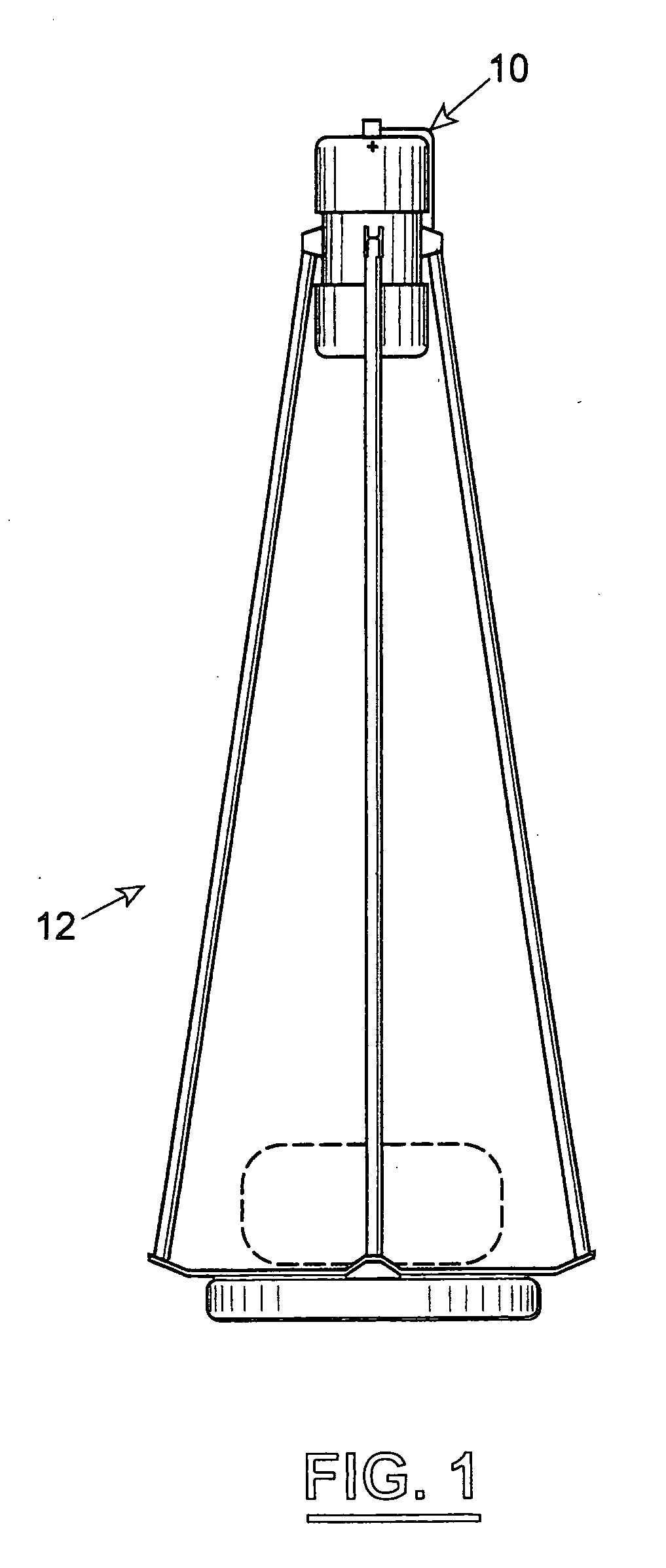Electric-field meter having current compensation
a technology of electric field meters and current compensation, which is applied in the installation of lighting conductors, electrostatic field measurements, instruments, etc., can solve the problems of high cost of commercial field meters currently available, high electrical power requirements, and well known natural hazards of lighting
- Summary
- Abstract
- Description
- Claims
- Application Information
AI Technical Summary
Benefits of technology
Problems solved by technology
Method used
Image
Examples
Embodiment Construction
[0032] The present invention is directed to improvements in electric-field meters to allow more cost effective and reliable monitoring of atmospheric electrification at single or multiple remote stations. The electric-field meter of the present invention exploits the physical principle that charge is induced on a conductor placed in an electric field. By alternately covering and exposing a conducting and properly insulated electrode assembly, induced charge flows back and forth to the successively exposed, then unexposed, electrode assembly through charge-sensing electronic circuits. The electronic signal produced is indicative of (e.g., proportional to) the applied electric field at the electrode assembly when exposed. Thus, the electric-field meters can be used for measuring a magnitude and / or a polarity of a steady or changing electric field.
[0033] The electric-field meters of the present invention can be used either individually or as a part of a network for research orfor wide...
PUM
 Login to View More
Login to View More Abstract
Description
Claims
Application Information
 Login to View More
Login to View More - R&D
- Intellectual Property
- Life Sciences
- Materials
- Tech Scout
- Unparalleled Data Quality
- Higher Quality Content
- 60% Fewer Hallucinations
Browse by: Latest US Patents, China's latest patents, Technical Efficacy Thesaurus, Application Domain, Technology Topic, Popular Technical Reports.
© 2025 PatSnap. All rights reserved.Legal|Privacy policy|Modern Slavery Act Transparency Statement|Sitemap|About US| Contact US: help@patsnap.com



